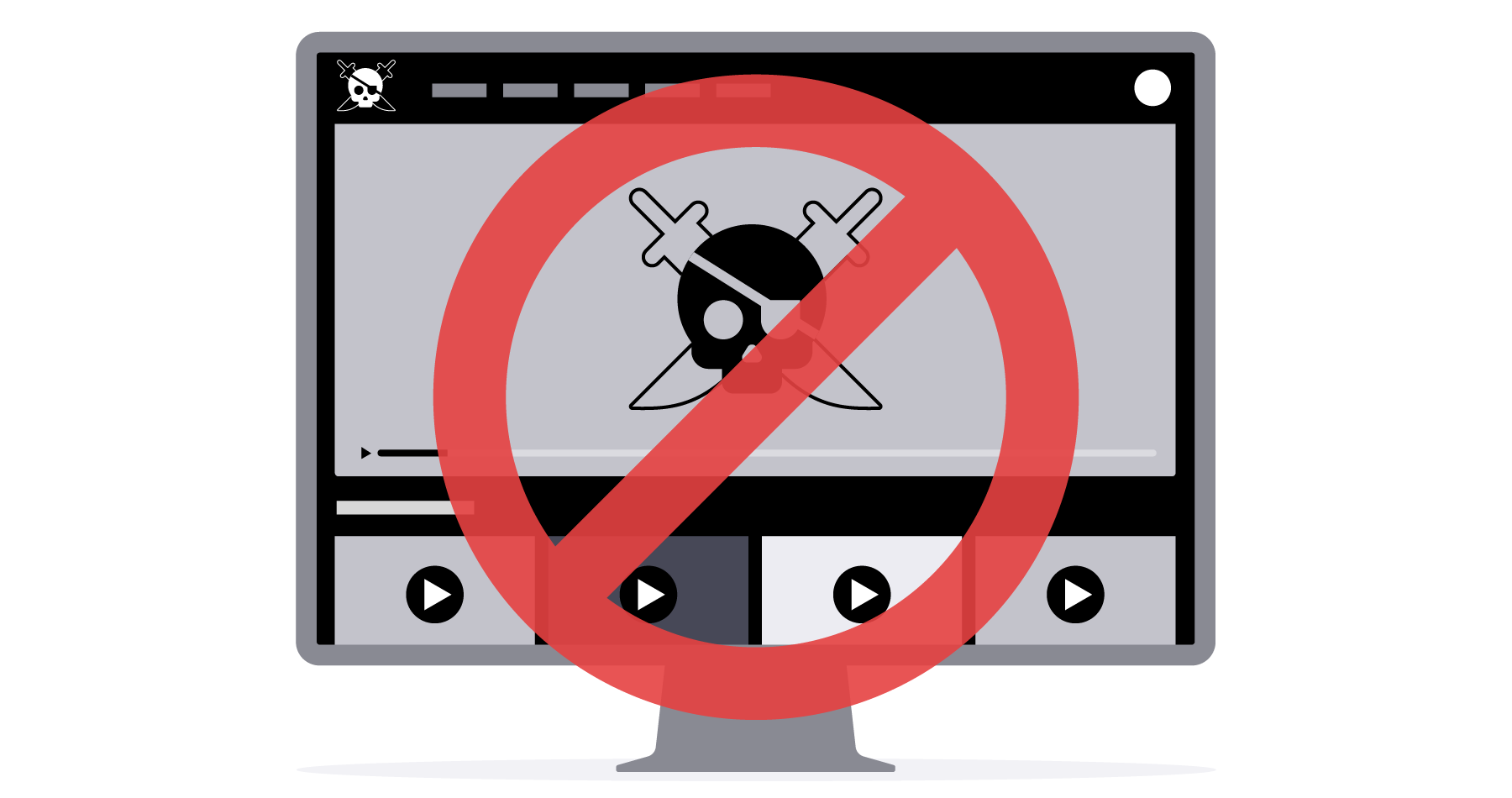As a content creator, your work is your passion, your art, and in many cases your livelihood. And with faster broadband, the ability to stream across devices, and a greater number of distribution channels, the potential to reach a large audience has never been greater.
However, this golden age of video brings challenges as well as opportunities. As we continue seeing barriers to video creation fall while mass distribution opportunities rise, we’re also seeing a spike in video piracy.
Whether through illegal downloads, password sharing, or torrent websites, we’ve seen the numbers climb year over year. In fact, from January to August of 2022, video piracy spiked by 49%.
Much of this spike can be attributed to the nature of advancing technology. Simply put, there are more and easier ways to pirate content as the number of sites dedicated to piracy increases. Add to that the growing normalization of sharing passwords to streaming sites, and you can see how content creators have never been more vulnerable.
And it’s not just sophisticated hackers looking to create the next Napster or Pirate Bay. Content piracy has become so normalized that everyday people like your neighbors, colleagues, family, and friends are engaging in it. While many of them wouldn’t consider themselves content pirates, we see stats that show 25% of people who use streaming services are accessing them through someone else’s login.
THE IMPACT OF VIDEO PIRACY
4444So how big is the problem? It’s hard to definitively quantify the impact, especially on a global level. Even the most diligent reports often show different figures or have different methodologies for reaching their statistics. However, several stats paint a sobering picture.
- Pirated video material gets over 230 billion views a year.
- In the U.S. alone, video piracy accounts for between $47.5 billion and $115.3 billion in reduced gross domestic product per year.
- 71,000 jobs are lost in the USA due to online piracy.
While the numbers above are eye-opening, the potential damage could have a much greater impact on smaller creators, emerging artists, and up-and-coming videographers. Effective protection for these artists can often be the difference between continuing to pursue their passion and having to abandon their goals to find other ways to support themselves. Left unchecked, video piracy can severely stifle the creative industry.
Beyond the economic impact on artists and creators, businesses also suffer heavy losses from the spread of pirated content. In addition to billions of dollars in lost revenue, damages can range from tarnished brand reputation to privacy concerns and even data breaches.
WHO DOES VIDEO PIRACY IMPACT?
Who is most susceptible to video piracy? The short answer is anyone who creates and distributes content. However, there are a few categories of content owners that tend to see higher levels of piracy.
- Streaming services. By far the most common unauthorized access to content comes through illegal streaming, accounting for up to 80% of global online piracy. Beyond voluntarily sharing passwords, accounts can also be hacked and login credentials sold on black-market sites.
- Businesses. Sensitive company content is constantly under threat from hackers. This could include internal video meetings, private virtual events, or a variety of confidential internal content. As mentioned above, even content that is meant for public consumption can be pirated and show up on unsavory sites, which can create lasting brand damage for the companies.
- Content creators. From local creators to international producers, pirates threaten their livelihoods by using software to illegally download content or screen recorders to capture content and resell or distribute it.
HOW TO PROTECT YOUR CONTENT FROM VIDEO PIRACY
The good news is that there are a number of anti-piracy measures that can significantly increase the security of your video content. We’re not talking about video DRM and basic content encryption; that should be standard for all content owners. When choosing a video streaming platform, make sure it includes these advanced security features.
- Playback restrictions. Geo restrictions limit which countries or locations can access your content, allowing you to blacklist or whitelist where your content can be viewed. Entitlements at the video or video library level temporarily restrict access at the user level, preventing the wrong users from requesting licenses and delivering licenses based on terms you dictate (such as duration or device).
- User limits. Concurrent stream limits help restrict multiple users from sharing the same password or access to your content. Device limits allow you to regulate how many devices a single user can stream on.
- Forensic watermarking. Forensic watermarking helps you protect your content by preventing activities like screen-recording content, editing content, or recording with other devices. However, this feature also allows you to identify the pirates who may be leaking your content. This feature is particularly valuable for exclusive and embargoed content that you may need to share with a select group of people.
Even as piracy and its impact on creators and companies continue to grow, advanced security measures and technology can help protect your content and maximize your revenue. The key is being aware of how widespread piracy is and understanding your options for making sure that security is engrained through your entire process, from creation to distribution.




